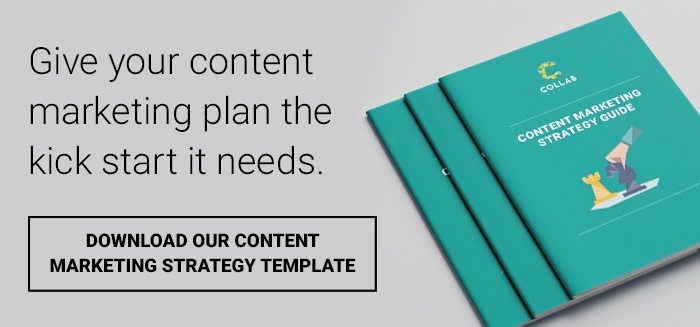THE FOUNDATION OF CONTENT MARKETING IS STILL YOUR BLOG
Blogs have been around for a while now and it is estimated that there are over a billion blogs out there. So, do you need to blog anymore? The short answer is yes because blogs are the foundational content format to leverage you content marketing off.
We all understand that the competition for eyeballs become so intense that even with content marketing now becoming more widely understood, many businesses are still struggling with what areas of content marketing they should focus on and to generate leads and customer conversions from their efforts.
Give your Content Marketing the kick start it needs. Download our FREE Content Marketing Guide.
The answer to this question is clear. Blogging should be at the heart of your content marketing strategy because blogs generate more traffic from Google search (on average 60% of a site’s search traffic) than anything else. Blogs will also get you 55% more traffic than those businesses that don't blog and are a great source of long tail, long term, evergreen traffic than any other format.
Perhaps more importantly, blogs form the basis of a more human, helpful inbound way of marketing. Blogs can help your buyers along their journey by answering the questions that that ask and providing the solutions they need.
So, how many blog posts do you need to write? How long do they need to be? What resources should you allocate? What will work for you now and into the future?
14 insights to generate more leads from your blogging and content marketing
- If you are expecting to grow your blog’s direct traffic through social platforms, then think again. Algorithms like on Facebook are really limiting your organic reach They are driving less and less traffic each year and it’s unlikely to improve in the future.
Research shows that SEO generates 51% of a blog’s traffic. Social media was in fact the 5th most popular channel.
INSIGHT: Prioritise SEO over organic Social Marketing for traffic generation goals or look to boost your organic posts with paid media. - There is no magic formula for how often you need to blog but being consistent is important. Having a cadence of one per week is something to strive for and having a content marketing calendar will help ensure the ideas and inspiration doesn't run out.
INSIGHT: Remember not to sacrifice quality for quantity. Google ranks for intent and integrity so make sure your accuracy and style are always being refined. - Google ranks for keywords and intent. What this means is that Google matches keywords with the context and intent of the content. So ranking web pages purely based on keywords alone is not likely to work well anymore. Intent is all about the quality of your content – hopefully like your blog!
INSIGHT: Improve your blogging by focusing keywords and the intent of the content to help or provide value beyond the product you sell. - Getting results from SEO is getting more competitive because there are more blogs popping up and people are creating tons of content. And don't forget to promote your blog - you've put the effort into create interesting and helpful content, so it's likely that you key persona will also find it useful.
INSIGHT: You have no choice but to create content in your own authentic voice and promote it widely via email, social and digital advertising. So, avoid blogging purely for clicks and use your blogging to form views and establish that trusted advisor status you know generates business. - US based research, also shows that on average, mid-sized companies with a blog now have at least 2 full-time employees or 10 agency equivalents managing their blog.
INSIGHT: Blogging and content marketing requires real effort and investment - you need to take it seriously with using the collective intellectual capabilities of your business if you want to succeed at it. - Websites with a blog get 434 percent more indexed pages than websites without blogs, according to HubSpot.
INSIGHT: The more pages you have indexed with Google, the greater the possibility you have in showing up in search engine rankings. - Research also suggests that to achieve page one search engine results for your blog, you need on average, a word count of 1,890 words.
INSIGHT: Long form blog content is best for SEO results, so don’t skimp on your effort. - With blogging, it is a case of the greater the quality content you create, the higher the chance you’ll have of attracting more visitors.
INSIGHT: Think of your content as lead magnets. And the more magnets you have, the greater chance of attracting the right customers. - This is a common question – “Will all this content marketing effort lead to more customers?” The answer to this question is yes – it’s reported that around 24% of customers first find out about the company via their blog.
INSIGHT: It’s great that such a large proportion of customers find out about a company via their blog, however even better is the authority the blog creates between buys and seller, given it’s helpful and consultative nature. - When a customer interacts with your blog, it builds trust that enables your conversion rates to increase. In fact, someone who’s read your blog is 74% more likely to convert into a customer compared to someone who hasn’t read your blog.
INSIGHT: All businesses understand the need to build trust because trust leads to ongoing mutually beneficial relationships, so the case for blogging goes beyond search engine rankings. - Customers that come back to your blog before they convert are 3 times more likely to convert over a 2-week period of time.
INSIGHT: The case for re targeting is incredibly strong as is repeat emailing and an insightful connect call. You need to push them to convert. - Interestingly, some of the biggest traffic gains content marketers are currently seeing, is from translating content into multiple languages.
INSIGHT: Even if you currently only operate in local markets, we live in a multi-cultural society, so translating into languages like Chinese, Arabic and Spanish will grow traffic and showcase your ability to customise your offer for all. - Another opportunity to boost traffic can be achieved by updating and repurposing exisiting content. Content marketing is about quality and it’s not about cranking out hundreds of articles a month.
INSIGHT: Go back and give those old blogs a facelift – add an infographic, add the latest data/insights, add a new call to action and perhaps a video that expands on certain points within the blog. - Everyone knows that there is and will continue to be huge growth in video and audio content. Done well they can significantly improve traffic as Google favours content that keeps visitors engaged and on the page for longer.
INSIGHT: You need to focus on creating video and audio-based content that augments your text-based content. Videos have taken off and podcasting has also within the past few years.
Blogging and content marketing is tough when starting out, there’s no doubt. It requires a whole of business commitment beyond what traditional marketing demands. However, the benefits are numerous – Yes you can grow traffic and rankings, yet one of the most interesting benefits is the transformation of your business and people from inward thinking to customer centric thinking.
We encourage you to make a start if you haven’t already and if you have started, then think about putting more resources against what is the most important marketing asset you will create.

